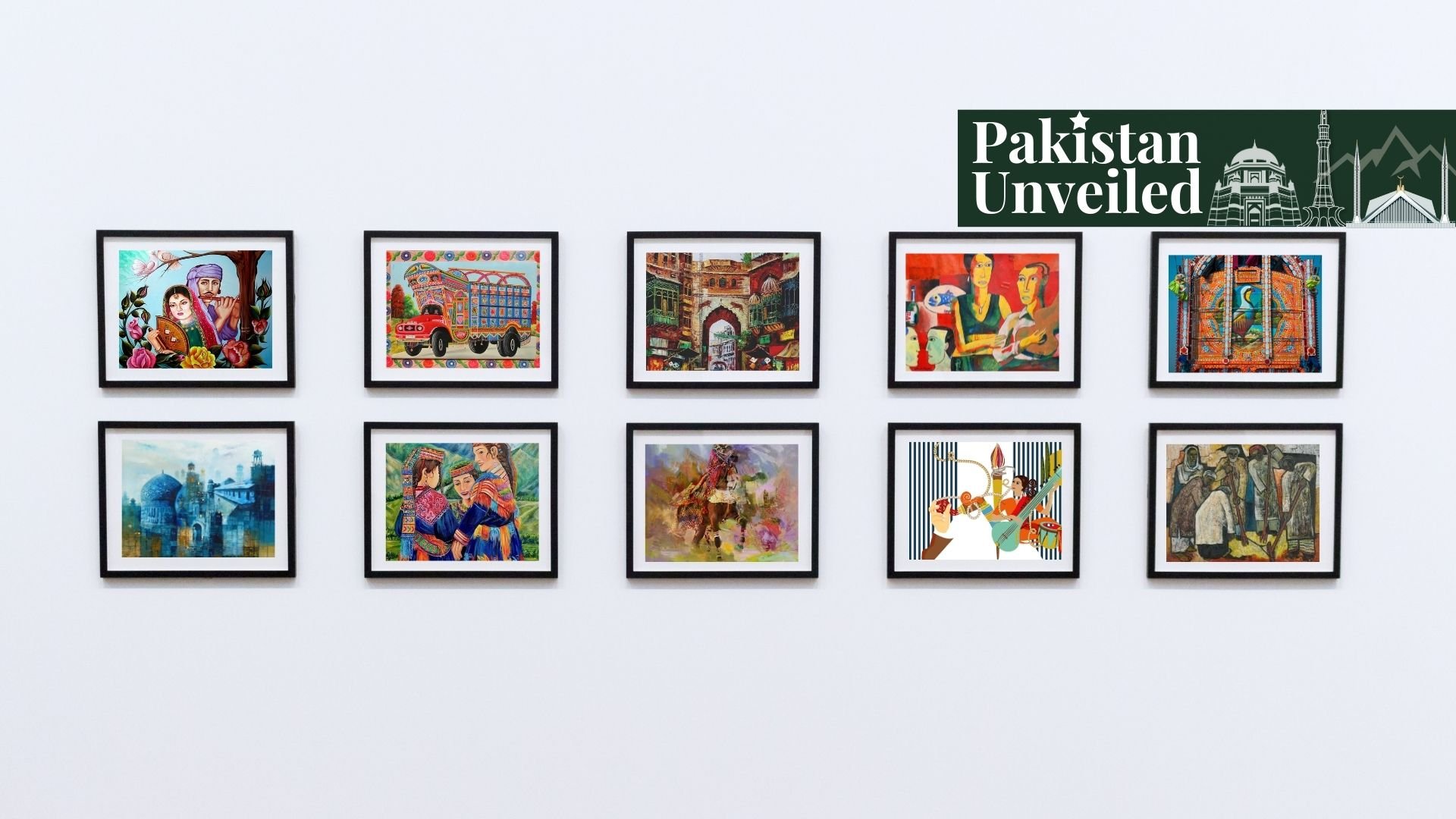Pakistan is located at the intersection of South Asia, Central Asia, and the Middle East and is rich in art and architecture influenced by Muslim rule and traditions. Pakistan has strong cultural roots, with various forms of art depicted throughout its history. Pakistani art forms encompass various crafts and styles from the prehistoric Indus Valley Civilization to the Islamic culture to the modern day. As an example, kashikari, koftgari, and carpet weaving practices have been passed down from one generation to another, while fresco works, naqashi, and mirrors together with woodwork also thrive. These practices combine the old techniques with modern aesthetics.
Kashikari
Kashikari (also written as “kashkari” or “kashi kari”) is the art of making ceramic tiles, which hails from the ancient Indus Valley Civilization, one of the oldest civilizations in South Asia. This art form developed over centuries and peaked during the Islamic period, when it became an important element of Islamic architecture, incorporating geometric patterns, vegetal patterns, and calligraphy.
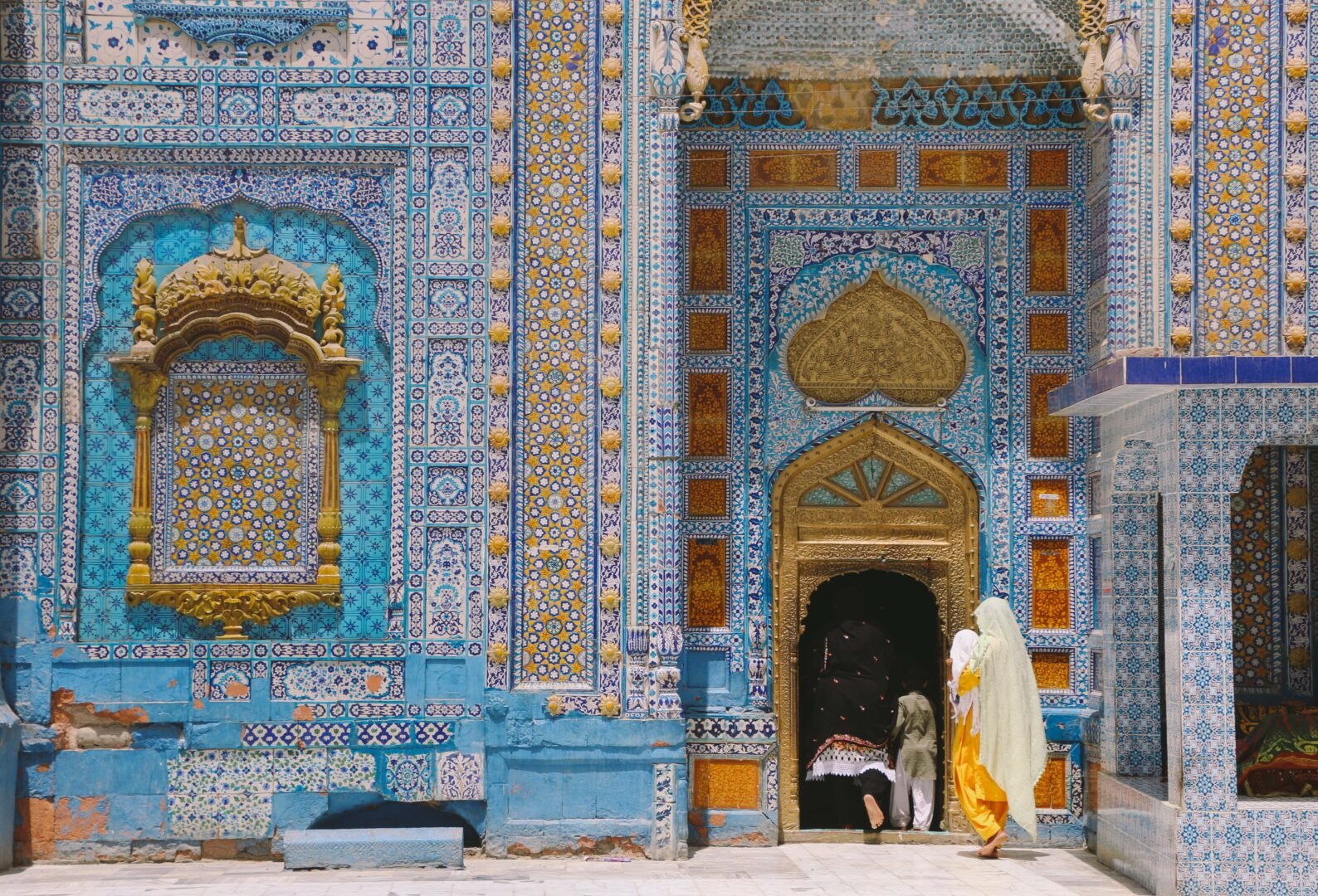
Today, kashikari adorns numerous historical landmarks all over Pakistan. Examples include the Lal Mahra Sharif in Khyber Pakhtunkhwa, adorned with beautiful blue and white tiles; the Shah Rukn-e-Alam shrine in Punjab, whose walls are decorated with intricate spiritual motifs; and the Sachal Sarmast tomb in Sindh, featuring vibrant tile work. Besides monuments, kashikari decorates mosques and homes all over Pakistan by fusing old techniques with modern designs while keeping its culture alive.
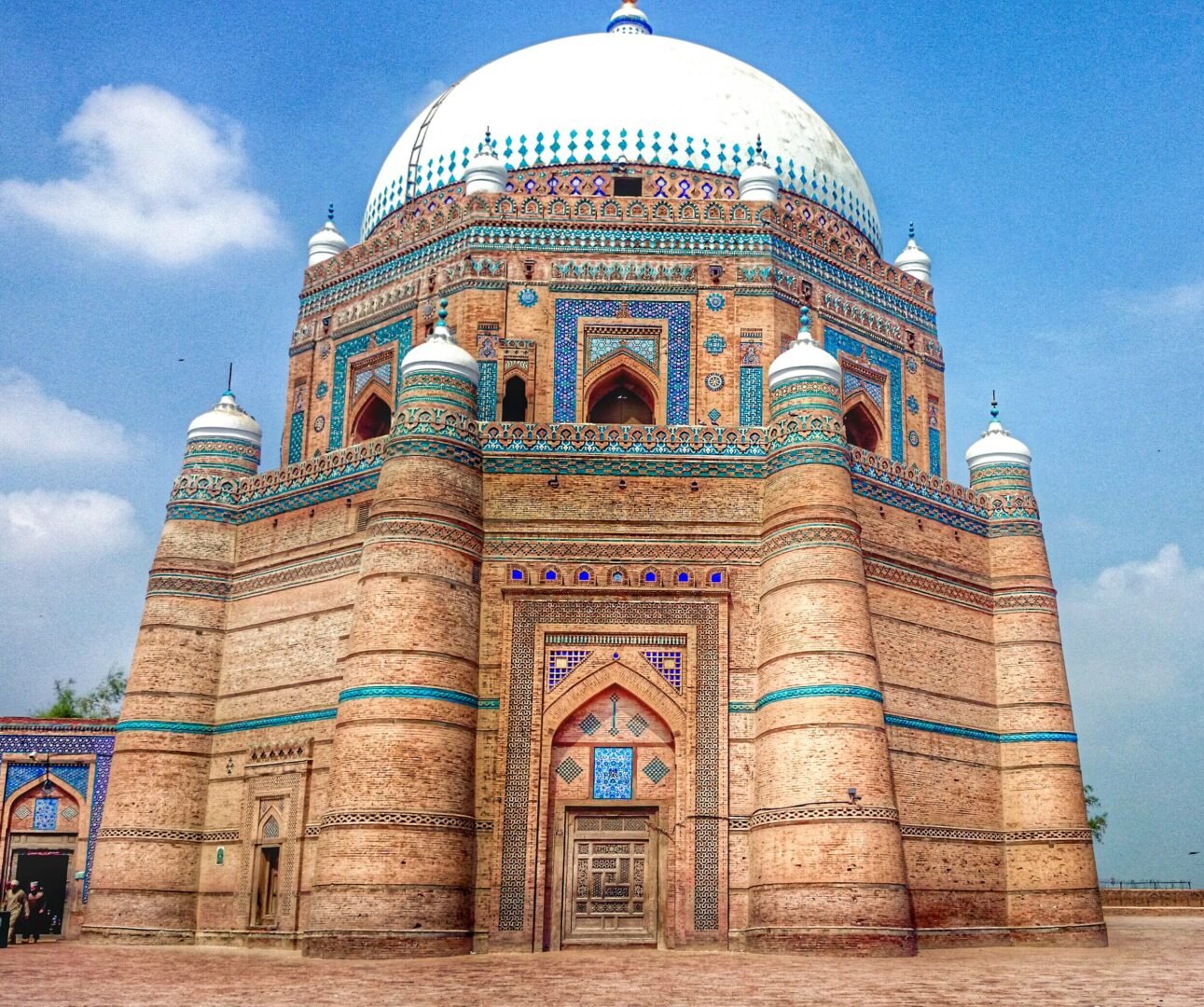
Koftgari
Koftgari is an art of decorating iron and steel with gold and silver. It was most popular during Muslim rule in South Asia when it was used for embellishing weapons, armor, etc. The process usually involved carrying out engravings on the metallic surface to insert precious metals, thus forming complicated patterns.
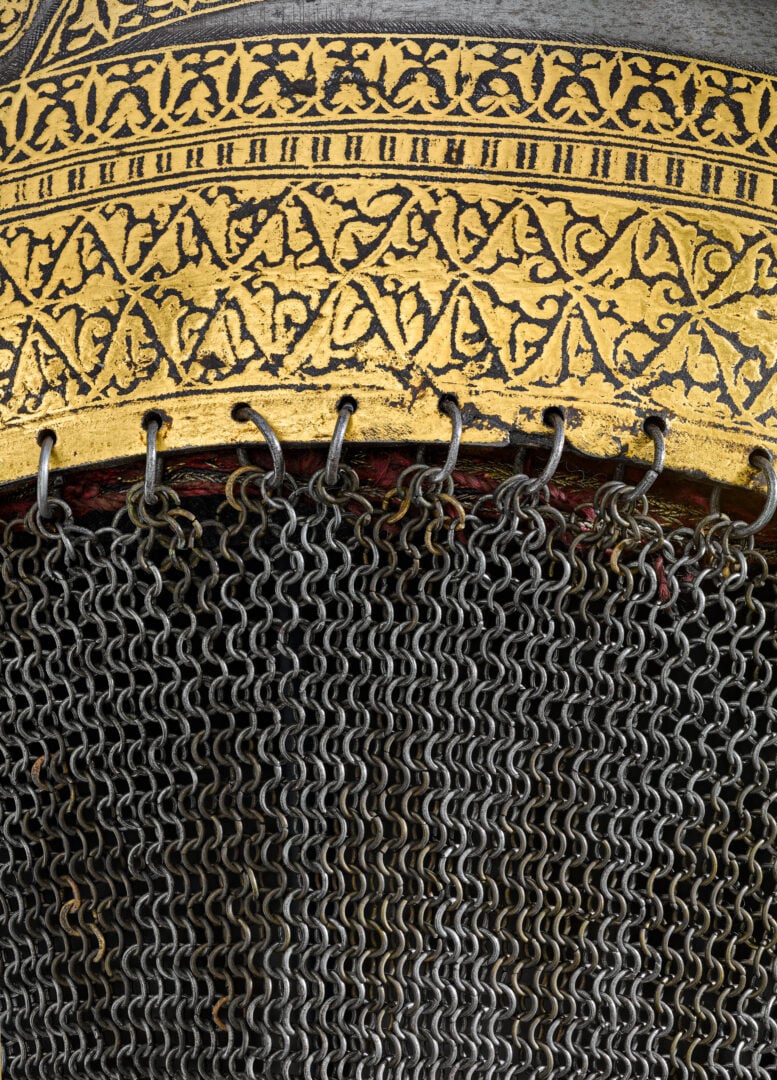
The leading koftgari centers in Pakistan were Gujrat, Lahore, and Sialkot, where skilled craftsmen produced some of the finest works in this art form. The decorated weapons were not only functional but also symbolized the wealth and power of their owners. There are still modern artists who engage in koftgari to create metal artifacts that carry forward the historical legacy.
Weaving Carpets
The art of making carpets by weaving various fibers like wool or silk into base materials is referred to as carpet weaving. This process encompasses designs and styles that are culturally meaningful and often represent the art and heritage of the places where they were made. Historically, carpet weaving has been practiced in many cultures around the world. It reached its peak during the Mughal Empire in Pakistan, which brought Persian techniques and weavers into the region, thereby enriching and diversifying the craft. It was in Lahore that some of the finest carpets were produced, thereby making it a major center for carpet weaving.
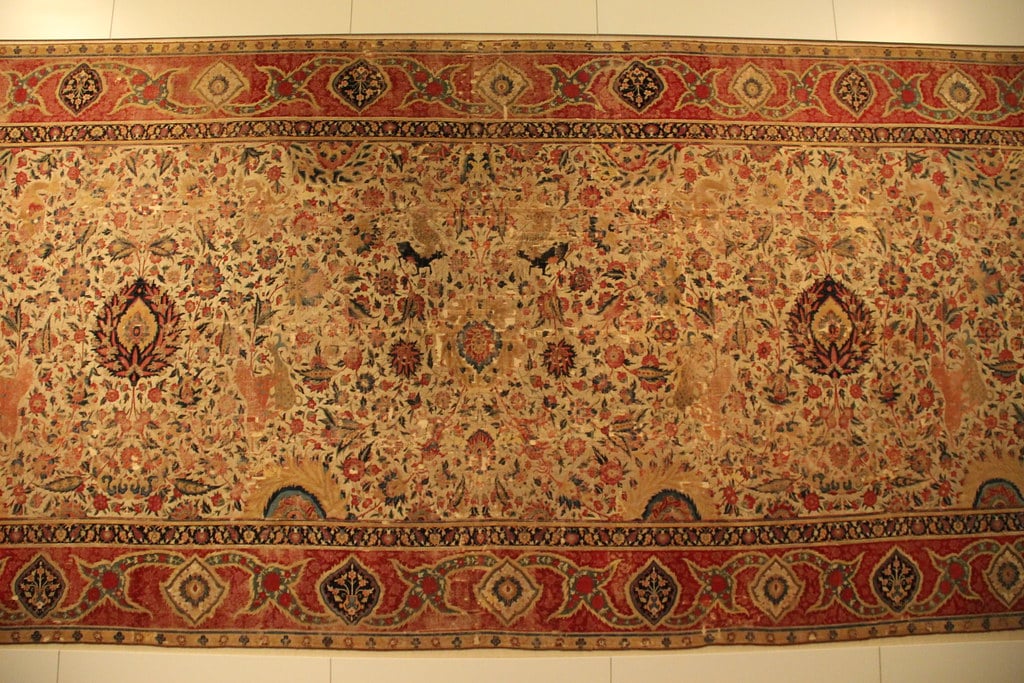
These include pictures of animals, flowers, and other things that are symbols of life. This carpet was not just material but also used to symbolize luxury. Carpet weaving still continues today in Pakistan, with Lahore remaining its main hub. Modern Pakistani carpets reflect Mughal influences through their quality and workmanship, such as those that are highly valued.
Fresco Works
Fresco painting is the art of painting watercolors on freshly applied plaster. It has a long history in Pakistan, dating back to the Mughal period. The beautiful designs adorning many historical buildings across the country are a testament to the imagination and skill of the artists who created them. These depict natural scenes, mythology stories, as well as everyday activities.
Truck art is one of the captivating contemporary forms of fresco work through which this artistic tradition in Pakistan is expressed. In Pakistan, trucks are often painted colorfully, thus making them regarded as a form of art. Drawing inspiration from historical techniques, these bright designs blend traditional motifs into vibrant, contemporary artwork. For instance, Sheesh Mahal (Palace of Mirrors), situated within Lahore Fort and built during the Mughal Empire, can be cited here. Its fresco work and mirror designs are highly intricate. Detailed paintings cover its walls and ceilings, illustrating floral patterns, mythical creatures, and scenes from Mughal court life.
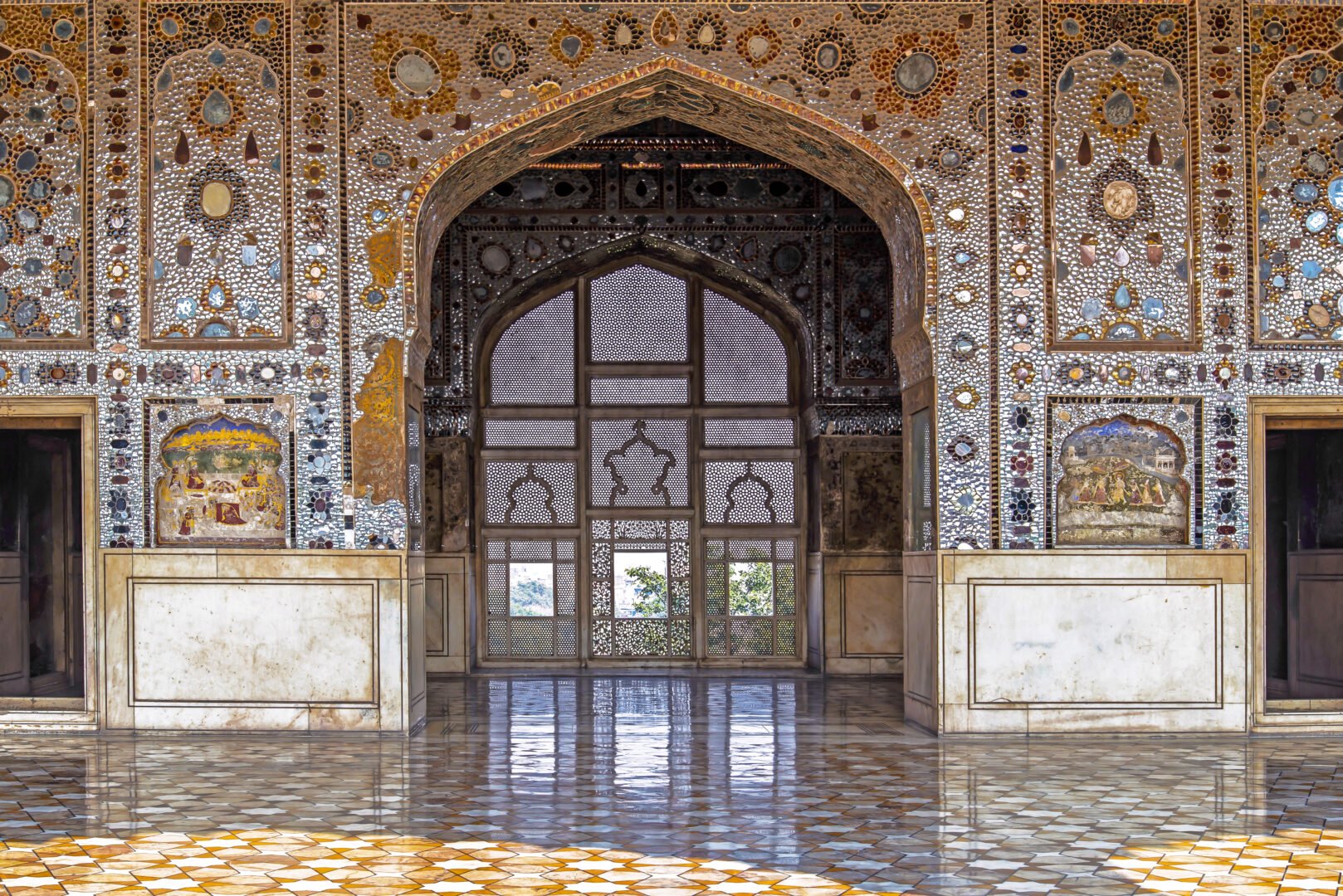
Naqashi
Naqashi is a Pakistani art form distinguished by intricately detailed patterns and is employed to embellish various surfaces such as walls, ceilings, furniture, and architectural components. Floral patterns, geometrical shapes, calligraphy, and other decorative elements make up this type of art. Naqashi art, deeply rooted in Islamic architecture, remains prominent in Pakistan today due to its strong historical and religious significance.
In addition to adding soulful beauty to mosques and forts, it preserves cultural heritage and shows how art can express religious values and historical significance. In Pakistan, Lahore has numerous artisans who have adopted these designs for their work on mosque architecture as well as other ancient buildings.
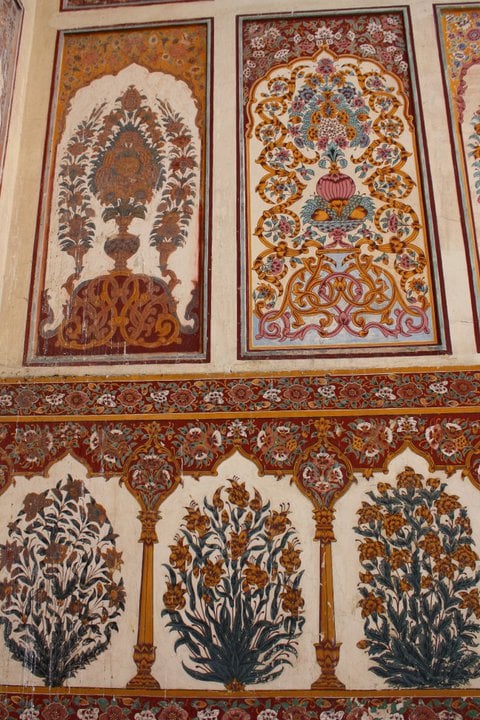
Mirror and Woodwork: Continuing Traditions
Mirrorwork and woodwork are other traditional art forms that have deep roots in Pakistani cultural heritage. Mirror art involves the use of small mirrors to create intricate patterns, often decorating clothing, textiles, and interior spaces. In Sindh and Punjab, this type of art is very common as it adds style to basic goods.
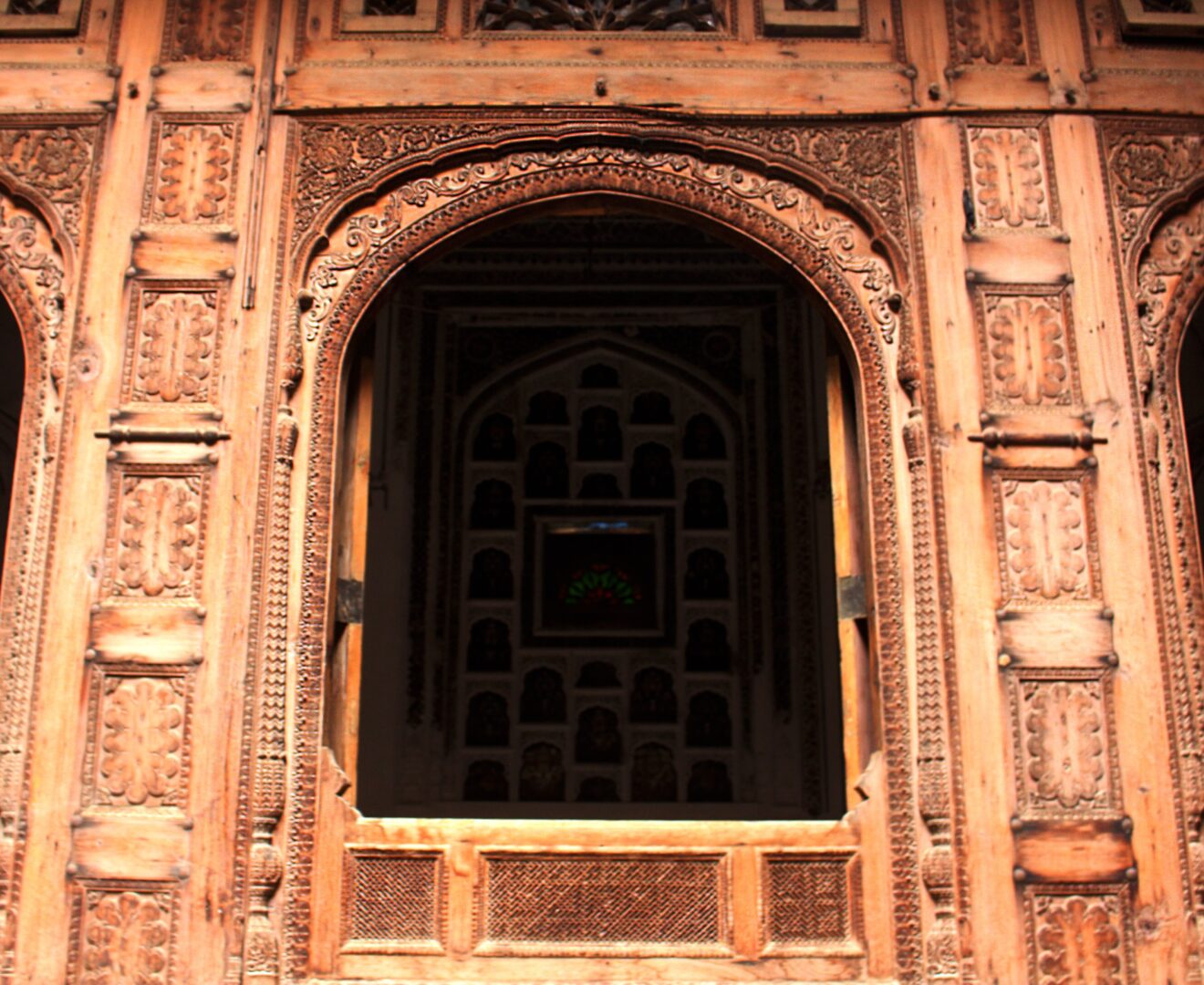
On the contrary, woodwork has been a significant part of Pakistan’s architectural and artistic traditions for many centuries. Pakistani woodwork ranges from intricate carvings on doors and windows to exquisite furniture, showing how skilled and creative its craftsmen are. Typically, designs include floral patterns with geometric shapes that depict much about the Islamic culture that has influenced most of their art.
Architecture
Islamic architecture in Pakistan reflects a rich culture amalgamating local traditions as well as Persian, Central Asian, and Mughal influences. Pakistani Islamic architecture is known for its intricately designed mosques, shrines, and forts. These structures often feature elaborate geometric patterns and calligraphy, crafted from local materials such as red brick and marble.

Mughal architecture is exemplified by Badshahi Mosque in Lahore with its grand domes and minarets decorated with detailed tile work. It is evident in its huge red sandstone construction and ornate marble patterns on its walls and domes. Shalimar Gardens, situated in Lahore, is an example of Islamic architecture from the time of Shah Jahan as well. These gardens are subdivided into three terraces, which represent charbagh, a Persian concept, which means four flowing rivers of paradise in Islam. Pakistan’s Islamic architecture not only represents its cultural identity but also shows how it has grown from artistic traditions and religious faith.
In conclusion, Pakistani art and architecture showcase a vibrant tapestry of cultural heritage, influenced by centuries of history and Islamic traditions. Each art form reflects a deep connection to the country’s past. Through a blend of traditional techniques and modern aesthetics, Pakistani art continues to thrive, preserving its rich cultural identity and serving as a testament to the enduring legacy of artistic traditions in the region.
If you want to submit your articles and/or research papers, please visit the Submissions page.
To stay updated with the latest jobs, CSS news, internships, scholarships, and current affairs articles, join our Community Forum!
The views and opinions expressed in this article/paper are the author’s own and do not necessarily reflect the editorial position of Paradigm Shift.
Ayesha Firdous is pursuing her bachelor's in international relations from International Islamic University, Islamabad.

